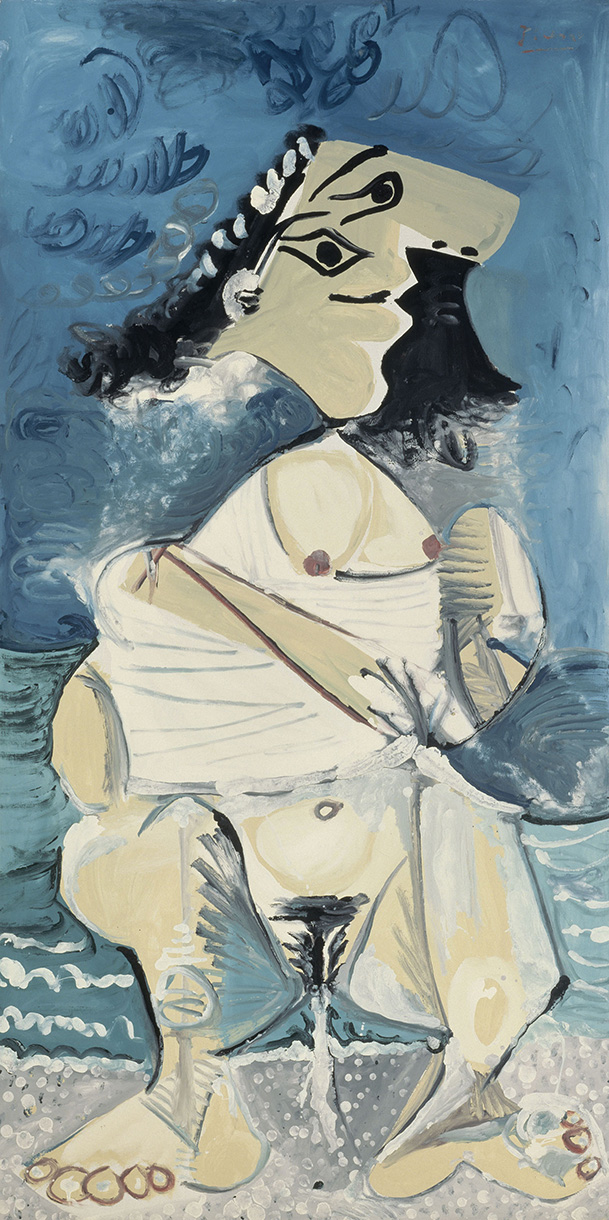
Pablo Picasso, La Pisseuse/Den kissande kvinnan, 16 april 1965. Centre Pompidou. © Succession Picasso/Bildupphovsrätt 2025. Foto: © Centre Pompidou, MNAM-CCI, Dist. GrandPalaisRmn/image Centre Pompidou, MNAM-CCI
Woman Pissing, 1965
Pablo Picasso
Runtime: 01:21
Narrator: For the last twelve years of his life, Pablo Picasso lived in Mougins, high above Cannes, with sweeping views of the mountains and the Mediterranean. He moved there in 1961 with his wife, Jacqueline Roque, and spent almost all his time at their home, Notre-Dame-de-Vie. The light, warmth and proximity of the sea reminded him of his childhood on the coast of Málaga and inspired a practice deeply rooted in the body, nature and movement.
The beach had long held particular significance for Picasso. It recurs throughout his work as a place where the human figure stands in direct contact with the elements – light, water and sand. In his paintings, the beach becomes a stage for life’s simplest actions: bathing, resting, playing, loving – and, in the case of Woman Pissing, the most natural of bodily gestures.
Painted in April 1965, the work belongs to a moment when Picasso was working swiftly and with great assurance. Vigorous brushstrokes and firm contours give the figure a strong physical presence. The scene is both direct and unembellished.
On the French Riviera, Picasso found an environment in which life and painting could flow into one another, and he continued to work there with remarkable intensity until his death 1973.